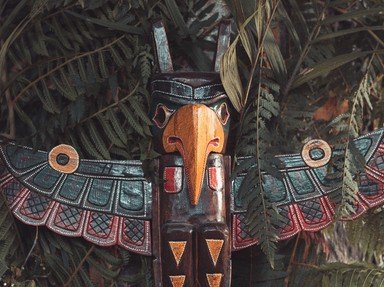Quiz Answer Key and Fun Facts
1. Which of these people was NOT a founder of the American Indian Movement?
2. Who was the last national spokesperson for AIM, before the national branch disbanded in the 1970s?
3. How many AIM members were put on trial for the 1975 Wounded Knee shootout, which left two FBI agents dead?
4. How many AIM members were convicted from the 1975 Wounded Knee shootout?
5. What former AIM member was in "Natural Born Killers"?
6. Russell Means was a member of the Libertarian Party.
7. What Hollywood actor was known to have ties to AIM?
8. What former U.S. attorney general has been counsel to Leonard Peltier?
9. Which AIM member wrote the poem "Aboriginal Sin"?
10. AIM was organized by American Indian men who had met primarily in what institution?
Source: Author
Shadowmyst2004
This quiz was reviewed by FunTrivia editor
trident before going online.
Any errors found in FunTrivia content are routinely corrected through our feedback system.
